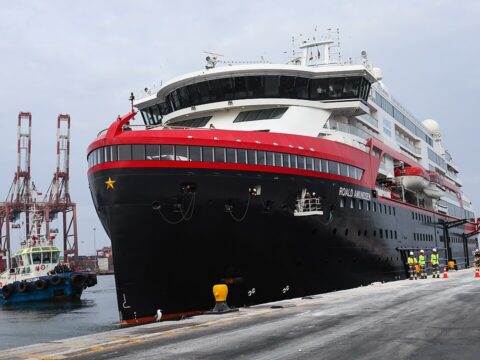Supersonic travel once promised to get us across the globe faster than ever, but technical challenges and environmental concerns grounded it for decades. Today, a new wave of innovations is bringing that dream closer to reality again. From noise reduction to sustainable fuels, these advances could make faster-than-sound flights practical and eco-friendly. Here are 15 game-changing innovations that might bring back supersonic travel.
Contents
Noise Reduction Technology

Noise reduction is essential to bringing back supersonic travel, as sonic booms have been a major barrier in the past. NASA’s Quiet SuperSonic Technology (QueSST) reshapes jet designs to transform the loud boom into a softer “thump.” By diffusing the shockwaves, QueSST technology makes flights over populated areas feasible and significantly quieter. If widely adopted, this advancement could open more travel routes over land, a crucial step forward.
Advanced Engine Materials

To endure the intense heat of supersonic speeds, jet engines require materials that are both durable and lightweight. New ceramic matrix composites offer exceptional heat resistance, enabling engines to operate safely at high temperatures. Additionally, these materials improve fuel efficiency by reducing engine weight, which means less fuel is needed. By lowering both weight and heat-related wear, advanced materials help ensure the longevity of future supersonic engines.
Variable Cycle Engines

Variable cycle engines represent a leap forward by adapting airflow to accommodate both subsonic and supersonic speeds. These engines shift between different cycles, optimizing performance and fuel efficiency for each stage of flight. General Electric and other companies are pioneering this technology, aiming to balance power with lower fuel costs. The ability to adjust dynamically makes these engines ideal for commercial flights that require both low-speed takeoff and high-speed cruising.
Lightweight Carbon Fiber Fuselage

Supersonic jets benefit from lightweight materials like carbon fiber, which reduces fuel consumption and enhances speed. Strong and durable, carbon fiber withstands the temperature fluctuations of high-speed travel better than traditional metals. Companies like Boeing and Lockheed Martin are exploring its use to create more efficient, lighter jet bodies. A reduced jet weight enables faster acceleration and sustained speeds, making carbon fiber an essential material in new jet designs.
Aerodynamic Shaping

The shape of a supersonic jet can greatly impact its speed and fuel efficiency, making aerodynamic shaping essential. Using computational fluid dynamics, engineers fine-tune designs to minimize air resistance at high velocities. This process helps create smoother, more streamlined bodies that reduce drag forces and increase speed. Companies like Boom Supersonic are leading the way, developing jets with carefully crafted aerodynamics for maximum efficiency.
Supercruise Capability

Supercruise, the ability to sustain supersonic speeds without afterburners, offers both fuel savings and noise reduction. Traditional afterburners consume immense fuel and create loud noise, while supercruise operates efficiently at high speeds. By eliminating the need for afterburners, jets equipped with supercruise technology reduce their environmental impact. In addition, this capability makes high-speed flights quieter, addressing one of the main issues with past supersonic travel.
Hydrogen Fuel Integration

Hydrogen fuel promises a cleaner, more sustainable approach to supersonic travel, reducing carbon emissions by a significant margin. Compared to traditional jet fuel, hydrogen provides high energy with a lower environmental impact. However, storing and cooling hydrogen poses unique challenges due to its low boiling point, which requires specialized tanks. Airbus’s ZEROe project is testing hydrogen-based propulsion systems for future high-speed jets.
Advanced Wing Configurations

Wing design is crucial for maintaining stability and efficiency at supersonic speeds, and innovations like delta and variable-sweep wings provide these benefits. Delta wings, shaped like a triangle, help reduce drag, while variable-sweep wings can adjust to optimize lift. Northrop Grumman is exploring these designs to balance stability and speed for high-performance jets. Adaptable wing configurations ensure jets handle well across various speeds, allowing smoother supersonic flights.
Optimized Flight Paths

Efficient flight paths are essential for minimizing fuel consumption and maximizing speed, especially in high-speed travel. By leveraging satellite navigation and AI, pilots can avoid adverse weather and optimize altitude, further improving efficiency. This innovation can also enhance passenger comfort by minimizing turbulence. Flight path optimization technology not only cuts fuel costs but also shortens travel times. Precision in routing makes supersonic travel more feasible and sustainable.
Adaptive Control Surfaces

Jets traveling at supersonic speeds need stability, which adaptive control surfaces provide by adjusting the wings and tail based on air conditions. Real-time sensors allow these surfaces to change angles automatically, maintaining balance at high speeds. This technology not only stabilizes flight but also minimizes drag by keeping the jet in its optimal position. Adaptive control surfaces have proven effective in military jets, and their inclusion in commercial jets could revolutionize high-speed air travel. Future supersonic aircraft could rely on such innovations to ensure smooth flights.
Electric Hybrid Propulsion Systems

Electric hybrid propulsion combines the efficiency of electric motors with the power of jet engines, making supersonic jets both faster and more environmentally friendly. While the electric engines are useful for takeoff and landing, jet engines provide the thrust necessary for supersonic speeds. Aerion and other companies are investing in hybrid technology to reduce emissions without compromising speed. By splitting propulsion tasks, these systems optimize energy use, making high-speed travel more sustainable. Hybrid propulsion could become the standard for next-generation supersonic jets.
Sustainable Aviation Fuel (SAF)

Sustainable Aviation Fuel (SAF), sourced from renewable materials, emits fewer greenhouse gases than traditional jet fuel. This cleaner alternative aligns with global efforts to reduce aviation’s carbon footprint. SAF is compatible with current engines, meaning minimal modifications are necessary to implement it in future jets. As production expands, SAF could significantly lower the environmental impact of supersonic flights. The adoption of SAF would mark a major step toward greener, faster air travel.
Smart Cockpit Technology

Smart cockpit technology, driven by AI, assists pilots by automatically adjusting speed and altitude during flights. This interface provides real-time weather updates and route suggestions, reducing the pilot’s workload. Dassault Aviation is among the leaders in incorporating AI features into modern cockpit designs. With smart technology, pilots can focus on crucial tasks, allowing for smoother, safer supersonic flights. This advancement enhances both safety and efficiency, making supersonic travel more manageable.
Ultrafast Data Transfer Systems

Ultrafast data transfer systems keep pilots informed by delivering real-time updates on weather, route changes, and air traffic. This technology is essential for supersonic jets, where quick adjustments improve both safety and flight efficiency. Passengers also benefit from high-speed communication systems that enable in-flight entertainment and connectivity. As this technology becomes standard, supersonic jets can offer a seamless and modern travel experience. Efficient data transfer supports both operational needs and customer comfort.
Efficient Thermal Management Systems

Efficient thermal management systems protect both engines and cabin environments from the intense heat of supersonic speeds. These systems regulate temperatures, preventing overheating in critical components and ensuring passenger comfort. Advanced thermal systems include specially designed cooling channels and heat-resistant materials for maximum safety. Maintaining optimal temperatures at high speeds is essential for long-distance supersonic flights.
This article originally appeared in MyCarMakesNoise.
More from MyCarMakesNoise
15 Most Reliable Trucks for Heavy-Duty Work

When it comes to heavy-duty work, having a reliable truck is essential. The demands of towing, hauling, and navigating tough terrains require a vehicle that can withstand intense pressure and maintain peak performance. Read More.
The 20 Best-Looking Sports Cars on the Market

If you’re a car enthusiast or just love the thrill of high-speed performance, you’ll appreciate our list of the 20 sleekest modern sports cars on the market. These cars combine cutting-edge technology, breathtaking design, and powerful engines to deliver an unparalleled driving experience. Read More.
16 Vehicle Features We Wish Would Make a Comeback

There are certain car features that, despite being phased out over the years, still hold a special place in the hearts of drivers. From practical designs to nostalgic touches, these features made driving more enjoyable in ways that modern technology sometimes misses. Read More.














